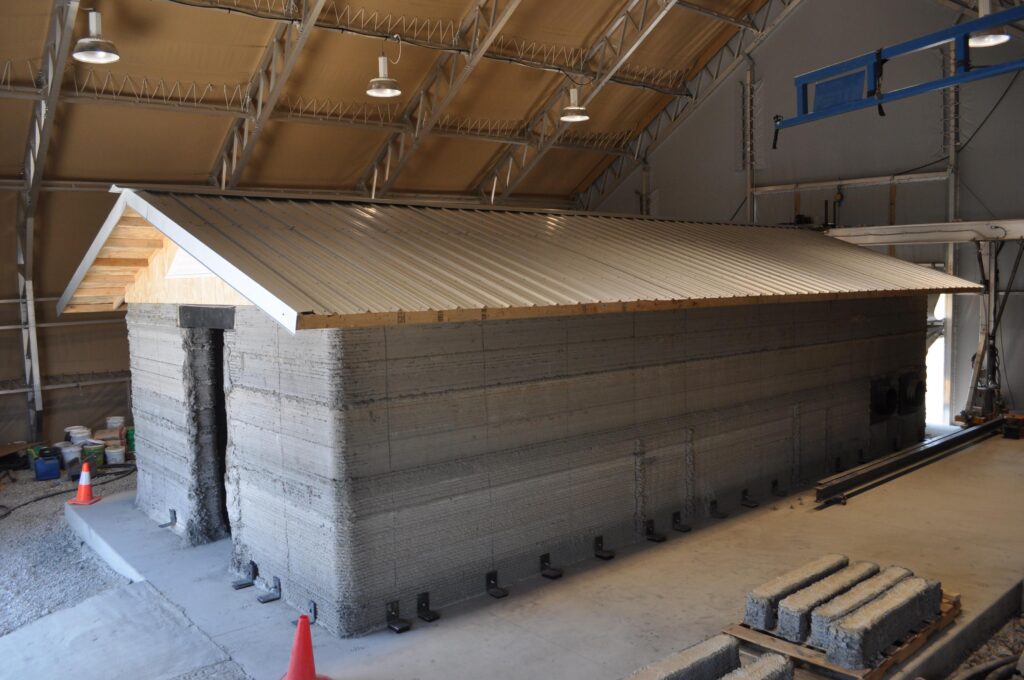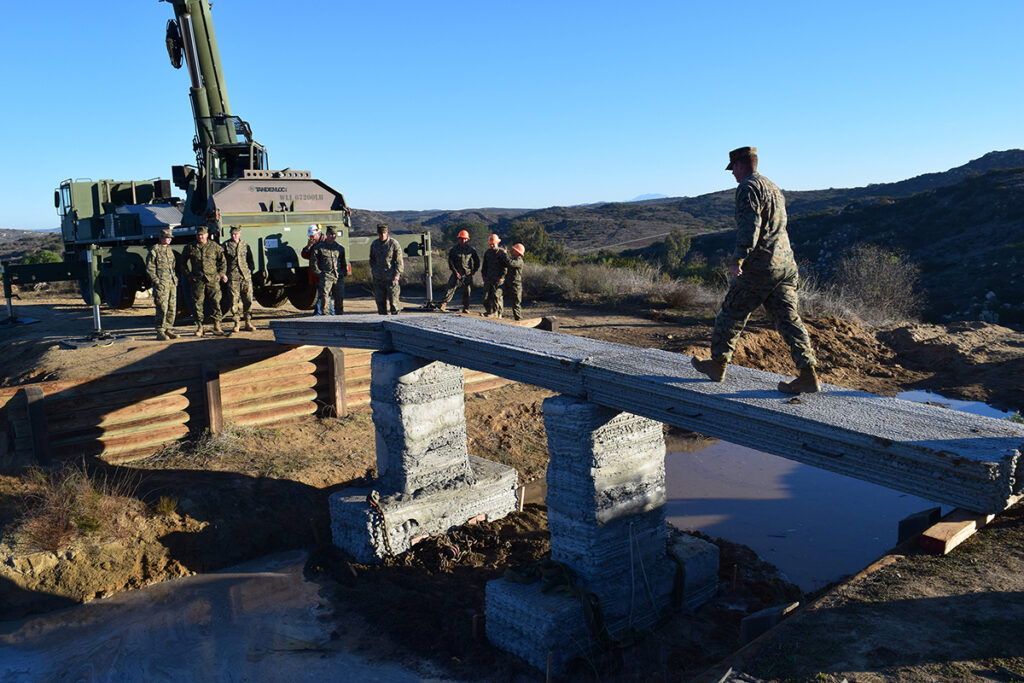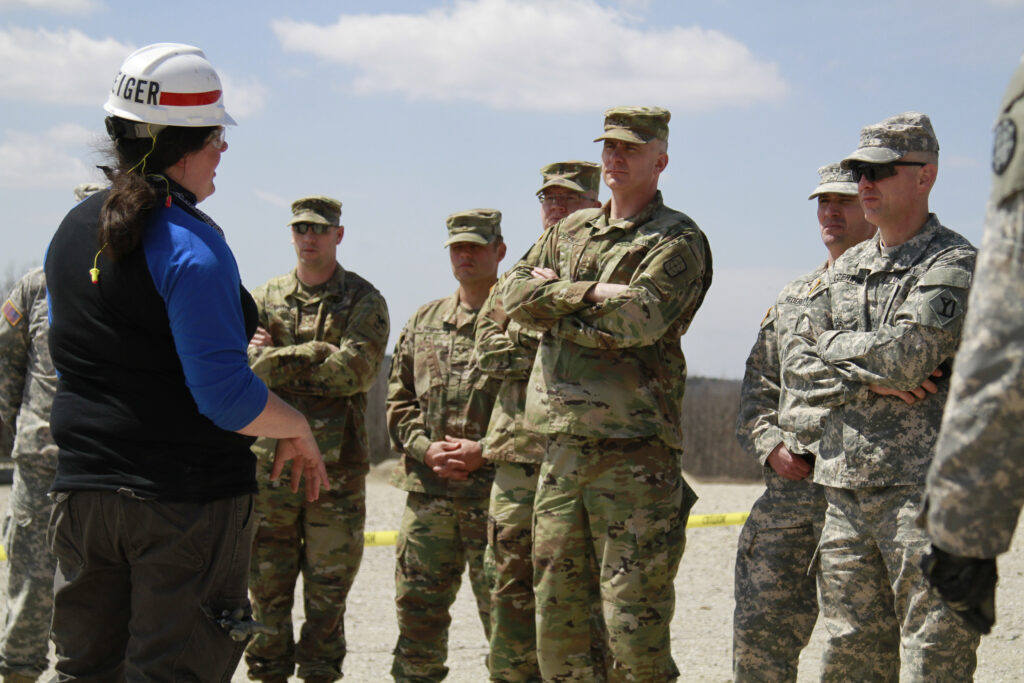Profiling a Construction 3D Printing Pioneer: US Army Corps of Engineers’ Megan Kreiger
The world of construction 3D printing is still so new that the true experts can probably be counted on two hands. Among them is Megan Kreiger, Portfolio Manager of Additive Construction (AC) and the Department of Defense’s subject matter expert of AC at the U.S. Army Corps of Engineers, Engineer Research and Development Center (ERDC). To become a pioneer in such a novel industry, Kreiger, like the rest of those experts, may have found herself at the right place and at the right time.
As a graduate student at Michigan Technological University, Kreiger worked under open-source legend Dr. Joshua Pearce, where she focused on distributed manufacturing and recycling. During that time, she was immersed not only in the world of open-source RepRap 3D printers, but also found herself engaged with the school’s Civil Engineering department, under Dr. Tess Ahlborn consolidating literature on ultra-high-performance concrete and the like—such that, when she found a position at the ERDC’s Construction Engineering Research Laboratory (CERL) in 2015, she immediately got roped into AC.
“At ERDC-CERL, we were pursuing the ‘Automated Construction of Expeditionary Structures Project,’ which was really intended for just producing one structure and seeing what the capabilities of the field were. We had a partnership with NASA Marshall Space Flight Center and NASA Kennedy Space Center and I started out on the technical team.” Kreiger relayed. “I started with the idea of taking a RepRap and turning it into something that was construction scale and would be easily maintainable for the field.”
Over time, ERDC-CERL established individual teams dedicated to printer development, structural, materials, energy and other pieces of the AC puzzle. This led to the first full-scale printed concrete building in the Americas:
“Basically, we felt like the project wasn’t moving fast enough. So, we essentially built our first larger printer in about two months’ time. Then, within that same year we built a full-scale printer that was capable of doing a 16 foot by 32 foot by eight-foot-tall structure. We made pretty big headway within essentially a year of printer development. That was all in parallel while NASA was also developing a printer.”

A barracks hut 3D printed by Kreiger and ERDC-CERL circa 2017. The printer cut building materials shipped by half and construction manpower requirements by 62 percent when compared to expedient plywood construction in overseas military construction. Image courtesy of ERDC-CERL.
Deployable Construction 3D Printers
Since then, ERDC-CERL has completed numerous AC projects (some of which 3DPrint.com has had the opportunity to witness live) across the Joint services with more than 12 academic partners, as well as the National Institute of Standards and Technology, the Naval Research Lab, Military personnel, multiple private sector companies, and other government organizations. The lab has a comprehensive, wide-reaching program that covers everything from basic research into printing systems, as well as materials development and characterization, to reviewing potentially permanent occupiable structures printed by contractors.

A Marine with 1st Marine Logistics Group walks across a concrete footbridge during a 3D concrete printing exercise Dec. 12, at Camp Pendleton, California. Working with Marine Corps Systems Command’s Advanced Manufacturing Operations Cell and the Army Corps of Engineers, the 1st MLG used the Automated Construction of Expeditionary Structures—or ACES—printer to conduct 3D concrete printing of the bridge and evaluate emerging technology for future application in Marine Corps engineering operations. (U.S. Navy photo by Ensign Elizabeth Flanary)
Because the Army Corps of Engineers isn’t in the business of simply making and selling 3D printers, the group is focused on developing AC technologies for strategic applications. Namely, AC is ideal for expedient construction projects in locations outside the continental United States, including Hawaii and territories like Guam, where logistics are a significant challenge. In turn, a key difference between the work that Kreiger and the ERDC team is pursuing and those of the commercial manufacturers has been a focus on the deployability of the machines.
For instance, the printers that the ERDC-CERL team has created do not typically include precision rails that would be difficult to clean and maintain. Rather, they are based on chain-and-sprocket or truss designs. Another differentiator is the fact that most commercial systems feature a large horizontal element for the Z-axis. Although this adds stability and overall print quality, it limits on-site construction possibilities. Instead, CERL removed the horizontal member, which in turn makes it possible to print in between other objects and without collisions.
“If you’re military personnel stationed thousands of miles from home and a part on your printer breaks, imagine every time you place an order, it could take six months to receive that part. Is your printer essentially out of commission for half a year, becoming more of a burden than a tool?” Kreiger said. “The goal, then, is to utilize parts that are globally available or perhaps compatible with other military equipment and parts.”

U.S. Army Engineer Research and Development Center, Construction Engineer Research Laboratory mechanical engineer and Additive Construction technical team leader, Megan Kreiger, briefs Army officers during the Maneuver Support, Sustainment, Protection and Integration Experiment printing technology demonstration, at Fort Leonard Wood, Mo., April 2018.
Additionally, the systems must be lightweight and compact, usually fitting within a 20-foot-long shipping container. Because cranes aren’t readily available where these printers might be deployed, they also have to be able to be unpacked by hand or with small forklifts.
“We’re heavily focused on expeditionary applications,” Kreiger said. “That means being able to take a printer and go to the field, where you don’t have a whole lot of logistics to support you. Our printing systems are all designed to be able to be easily relocatable, set up on the job site within an hour to begin printing with a variety of materials.”
The ability to use local materials has become a key factor for deployable machines. In the case of Guam, her team was able to develop a mix using a new combination of additives and aggregates using materials on the island in just a few days.
Because the AC segment is so new, there is still much more to be done—not just technologically, but in terms of quality and standards across the sector. In a subsequent article in this interview series, we learn from Kreiger about where construction 3D printing stands in terms of these crucial areas and the role that she has played in advancing them.
Subscribe to Our Email Newsletter
Stay up-to-date on all the latest news from the 3D printing industry and receive information and offers from third party vendors.
Print Services
You May Also Like
Low-cost “Suzy” Polymer Powder 3D Printer is Faster and Cheaper than Past Models
Polish laser powder bed fusion (LPBF) firm Sinterit has released a follow-up to its predecessors, Lisa and Nils, called Suzy, a $19,490 printer equipped with a 30W fiber diode laser....
India’s $58M Space Fund Is a Boon for AM Innovation
India’s space industry is picking up serious momentum. With a projected $44 billion space economy by 2033, the country is aggressively expanding its capabilities, fostering private-sector participation, and reducing its...
Japanese Advanced Manufacturing Capabilities Grow in Europe with Sodick’s Purchase of Prima Additive
The global economy is currently undergoing a reshuffling in terms of what gets manufactured where. In large part, this trend is being driven by new geopolitical alliances and the need...
Bosch Invests €6M into Serial Auto Part 3D Printing
German industrial conglomerate Robert Bosch GmbH, the world’s largest supplier of automotive parts, has announced a new investment into Nuremberg, Germany additive manufacturing (AM) facility. The nearly €6 million in...



























